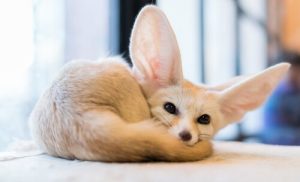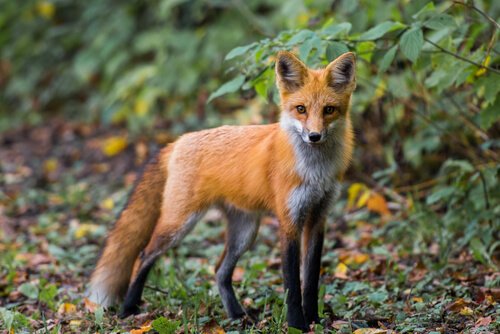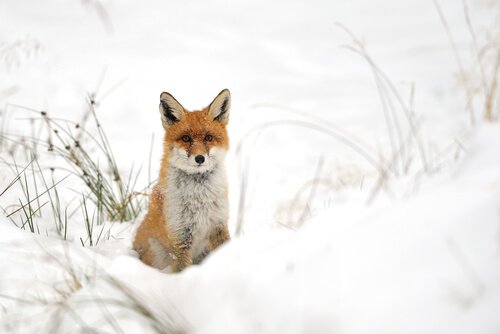4 Fox Breeds that You Should Know About
3 minutes

Last update: 26 July, 2018
Foxes are animals that often appear in fables, legends and stories. Both admired and feared by farmers, these animals are praised for their intelligence. However, you may only know about one fox breed, so continue reading to learn about the fox breeds below:
Fox breeds: traits
Foxes are mammals that live all over the planet, they inhabit nearly every continent and environment due to being able to adapt to their habitat. These animals belong to the canids family, which means they are related to wolves and dogs.
They are carnivorous and very intelligent, and often figure out how to sneak into hen-houses. Unlike wolves, they prefer to hunt alone and aren’t pack animals.

Their physical traits are different in each breed. However, people usually make generalizations by saying they all have a few things in common: big triangular ears that are considerably large for their heads, and fluffy, thick, long-haired tails.
Common fox
The common fox is the breed that most people know about. It is also known as the “red fox”. However, it can actually have more colors, ranging from brown to gray.
Red foxes can be found all throughout the northern hemisphere, however, they were artificially introduced to Australia. They can live in forests, meadows, alpine tundra, and even coastal areas.
Gray fox
The Gray Fox is an American breed that lives from the south of Canada to Venezuela. It is similar to the size of a coyote, but it has longer ears and a shorter snout and legs. The fur on its back is grey, but the fur on some parts of its body (face, neck, and chest) is red.
Polar or arctic fox
As its name says, it lives in areas close to the North Pole. It lives in the European and North American tundra, and digs dens inside walls of ice.
Although it has smaller ears than the other fox breeds, its fur is denser, which makes it possible for this fox to withstand the low temperatures of its habitat.
Arctic foxes have two types of fur: During the winter they are completely white, but during the summer their fur turns brown or gray. This is a trait that many animals have in order to adapt to cold environments. Their ears, legs and faces turn a darker color to attract the sunlight, in order to collect more heat.
It is one of the few Arctic species that are not in danger of extinction. Hunting it has been regulated or banned, although poachers still exist. Its skin is highly valued, but there are strict laws that protect this fox.

Fennec or desert fox
The fennec, or desert fox, is one of the lesser known and strangest fox breeds. As its name says, it lives in the desert, specifically in the Northern Sahara all the way to Sinai Peninsula.
It’s very small compared to other fox breeds. Its ears are disproportionately large compared to its head, which help them cope with the heat. Its tail is long and fluffy, and its feet are covered in hair that protects it from the hot sand.
They are small, but can jump up to two meters high to catch prey. They are nocturnal hunters, and feed mainly on rodents, birds and rabbits. However, they have also been discovered eating bugs and eggs. Unlike other breeds of foxes, fennecs do tend to live in small packs.
They are not considered to be in danger of extinction, but their population has been decreasing over the years. This can be blamed specifically on the destruction of their habitats, so some organizations are trying to protect the areas they live in. They want to prevent the fox from having survival problems in the future.
Finally, research has shown that foxes help maintain the ecological equilibrium of the forests. These animals are hunted for their skin, fortunately these practices have been regulated. Even though foxes are not in danger of extinction, they are still being protected. Foxes are beautiful animals that are necessary for the environment.
This text is provided for informational purposes only and does not replace consultation with a professional. If in doubt, consult your specialist.